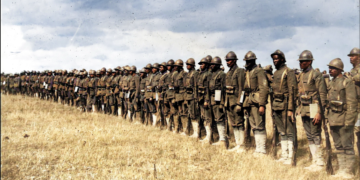Feb 4, 2025 Story by: Editor
Henry Louis Gates Jr. presents a compelling four-part documentary exploring the Great Migration, a movement that continues to shape the Black American identity. The series begins with Exodus, highlighting the first wave of migration in the early 20th century, driven by Jim Crow laws and the ever-present threat of lynchings. As World War I created job opportunities in the North, influential Black newspapers like the Chicago Defender urged Southern Black communities to move northward—and many heeded the call.
The second installment, Streets Paved with Gold, delves into the post-World War II migration, which significantly transformed cities like Detroit, where Berry Gordy applied Henry Ford’s assembly-line methods to establish Motown Records. The third episode, One Way Ticket Back, examines the Great Reversal, when many who had moved north became disillusioned and returned to a changing South. The final episode, Coming to America, expands the narrative to include the migration of African and Caribbean immigrants to the United States.
Gates, known for works such as Gospel, Making Black America, and Finding Your Roots, asserts that the Great Migration “continues to shape the identity of Black Americans.” However, this series argues that its influence extends beyond Black communities, shaping the entire nation.
A Journey Through History and Emotion
Many people have a broad understanding of the Great Migration, similar to how they know about the Civil Rights Movement—through key figures and overarching themes. However, as Gates’ series illustrates, there is much more to the story. While previous documentaries, such as PBS’s American Experience, have tackled the subject, Gates’ latest project stands out not only for its depth but also for the presence of Gates himself. At 74, with a prolific career spanning over 20 films, he has become a dominant figure in PBS programming, using his influence to ensure this important subject receives the attention it deserves.
Through four immersive hours, viewers will experience the emotions behind the migration—the desperation and the hope that led two million people north between 1910 and 1940, followed by another five million between 1940 and 1970. As many later returned to the South to escape systemic issues like redlining, unemployment, and racism in the North, the documentary captures their disappointment and longing. Gates even uses Gladys Knight’s Midnight Train to Georgia to illustrate this emotional return—perhaps sentimental, but undeniably effective.
A Story of Transformation and Resilience
In Gates’ telling, the Great Migration was a transformative movement that reshaped cities, culture, and ultimately, the nation. At its core, it was driven by a fundamental American instinct—the pursuit of a better life. When that dream soured for many in the 1970s, they moved once more, returning to family and familiarity. By then, major Southern urban centers had evolved, and this return migration carried its own sense of hope. Ultimately, Great Migrations tells a story of resilience. It begins with hope and concludes on a similarly optimistic note, offering a timely and uplifting perspective on a defining chapter of American history. Source: Newsday

















